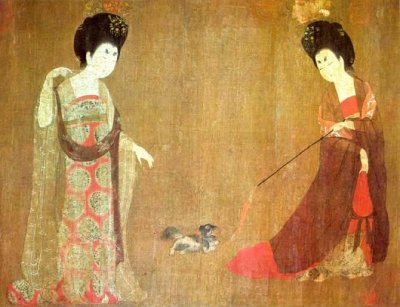Tang Dynasty Culture
 The Tang Dynasty represents the greatest culture flourishing in the history of China’s dynasties. Characterized by a cosmopolitan culture, the Tang empire was comprised of people from different geographical and cultural backgrounds, including Buddhist monks, Jews and Christians, Arab merchants, and others. This dynamic affluent and culturally diverse environment produced a great efflorescence of Chinese culture.
The Tang Dynasty represents the greatest culture flourishing in the history of China’s dynasties. Characterized by a cosmopolitan culture, the Tang empire was comprised of people from different geographical and cultural backgrounds, including Buddhist monks, Jews and Christians, Arab merchants, and others. This dynamic affluent and culturally diverse environment produced a great efflorescence of Chinese culture.
Art in the Tang Dynasty
During the Tang Dynasty, emphasis was made in developing art. The Tang era was an age of figure painters who created new styles of ceramics that were bold and colorful with variegated glazes.
Potters developed new techniques that included the use of “sancai,” which is a type of decoration that used three colors that mixed together for a unique look. Decorated bronze mirrors and white porcelain were also famous at that time as were sculptures of Buddha.
Poetry in the Tang Dynasty
The Tang era was a golden period for poetry and art. It is during this time that poetry became an integral part of the Chinese culture. The open policies of the Tang dynasty attracted people from many foreign lands to China, bringing various cultural elements into the society.
During the Tang Dynasty, one of the most distinguished cultural achievements came in form of Tang poems. A number of excellent poets appeared during the Tang era. Themes of their poems were varied, including life in peaceful village fields, life at frontiers, imaginative fancies or historic affairs. The literary skills of Tang poets reached heights that had never been surpassed in Chinese literature history.
Music
The influx of various ethnic groups and amalgamation of cultures made the music during the Tang Dynasty rich and unique. Musical instruments and musical forms from Iran, India, and Central Asia brought significant transformation in music during this era.
Musicians were given greater importance during the Tang era. Some of the popular instruments during those times included bells, stone chimes, flutes, drums and zithers. The openness to other cultures also led to adoption of western dances and songs during the Tang era.
